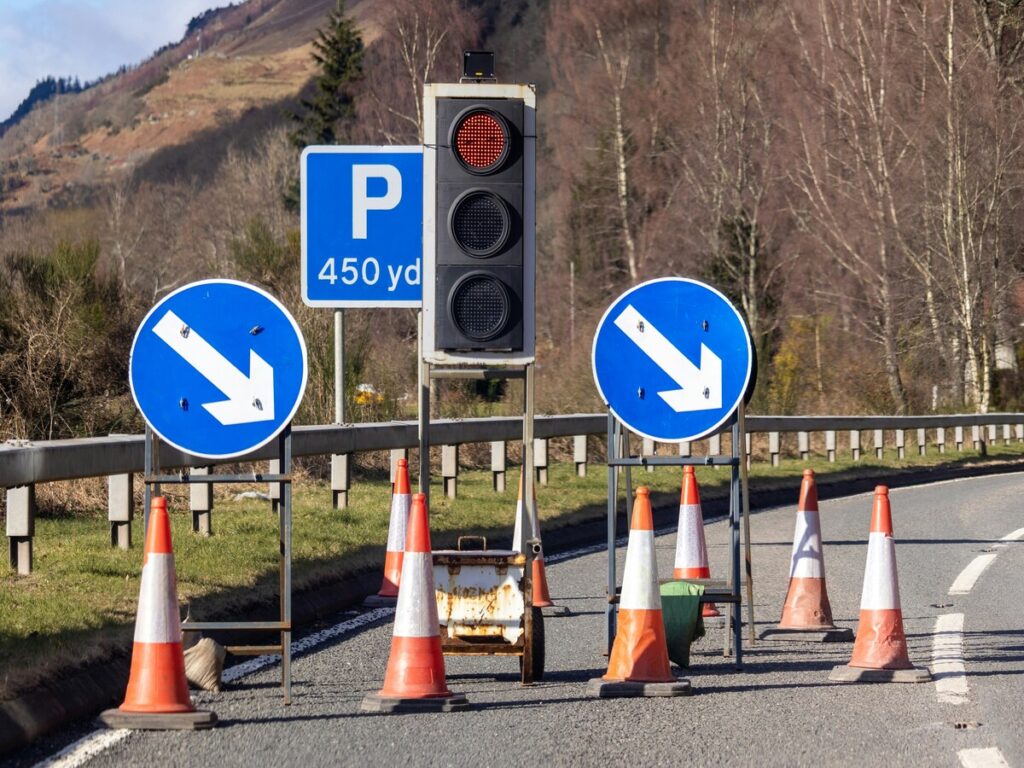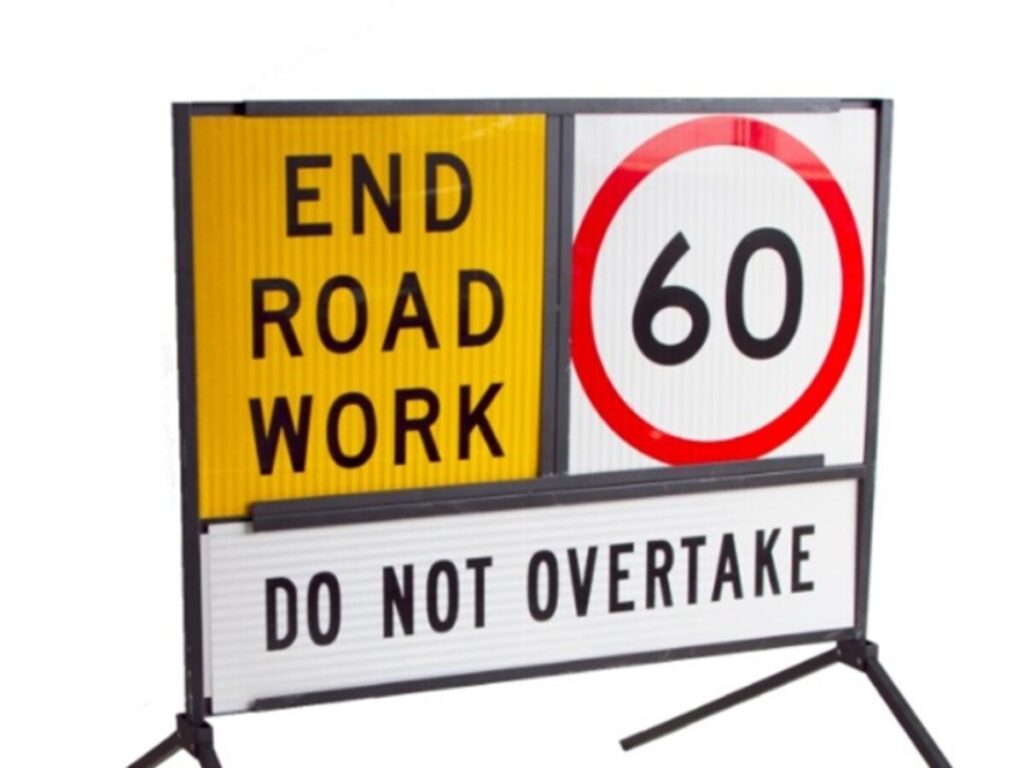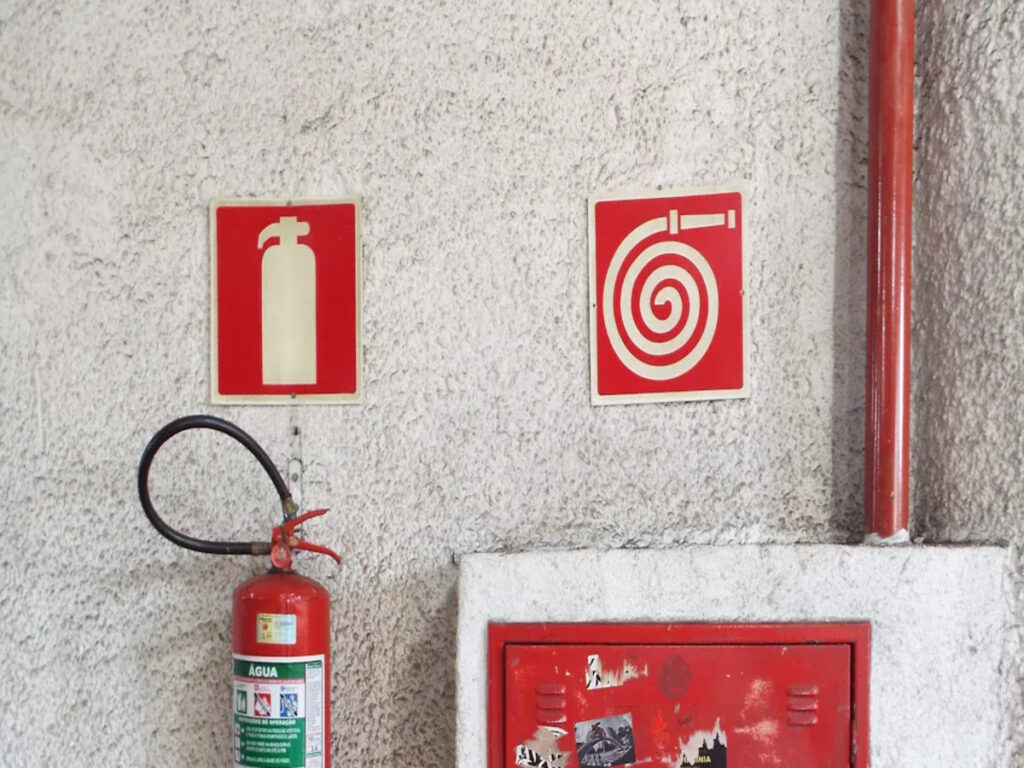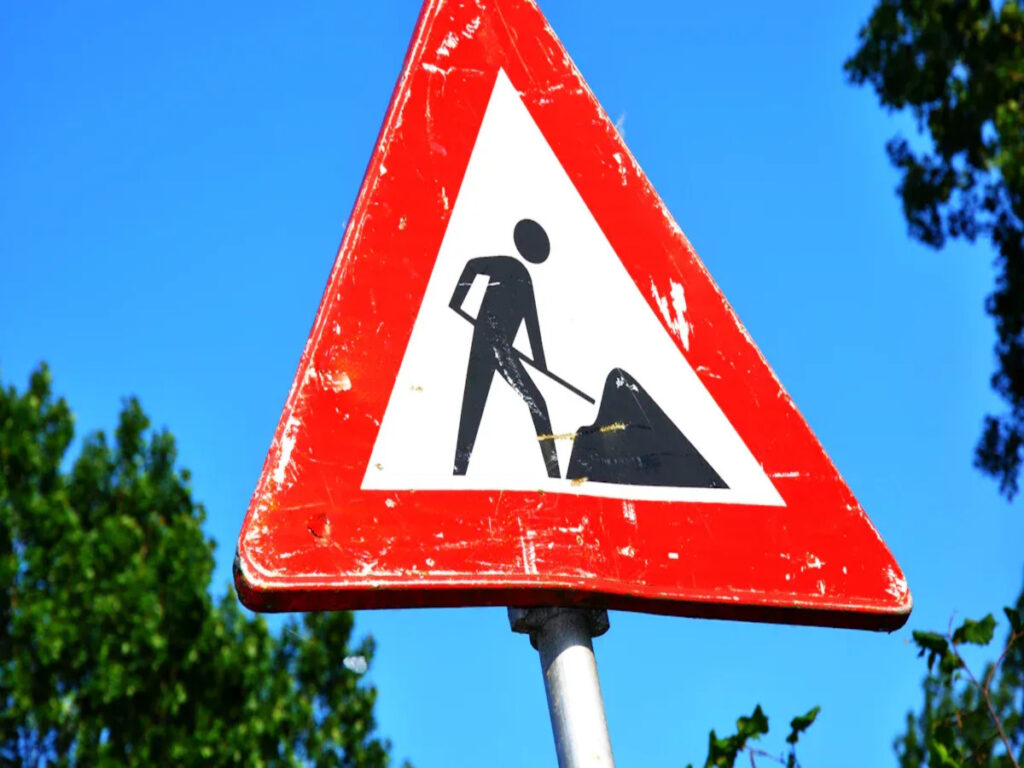
I graffiti sui segnali stradali possono essere pericolosi per i conducenti. In 2022, I lavoratori di Los Angeles hanno pulito 200,000 tag di graffiti da luoghi pubblici. Molti di questi tag erano sui segnali stradali. Il vandalismo può nascondere messaggi importanti. Questo può mettere le persone in pericolo. I rivestimenti anti-graffiti aiutano a proteggere i segni. Rendono anche la pulizia molto più semplice. I team di manutenzione del segnale stradale devono scegliere il rivestimento giusto. Non tutti i prodotti funzionano allo stesso modo. Conoscere le differenze può aiutare a fermare il vandalismo. Aiuta anche a mantenere le strade più sicure per tutti.
Ecco dove OPTRAFFICO arriva. Siamo specializzati in alta qualità, segnali stradali durevoli progettati per resistere agli elementi e resistere al vandalismo. Sono realizzati segnali di sicurezza del traffico optraffico con materiali avanzati che offrono sia un'eccellente visibilità che una protezione duratura contro graffiti e usura. Con i nostri prodotti, Puoi assicurarti che i tuoi segnali stradali rimangano chiari ed efficaci, anche di fronte al vandalismo.
Scopri di più su come Optraffic Segni di sicurezza in vendita può aiutare a migliorare la sicurezza stradale e prevenire costose manutenzioni scegliendo le soluzioni giuste per le tue esigenze.
Takeaway chiave
- I rivestimenti anti-graffiti aiutano i segnali stradali a rimanere puliti. Impediscono alla vernice e ai segnali di attaccare. Questo rende più facile pulire i segni. Aiuta anche le persone a vedere meglio i segni.
- Ci sono cinque tipi principali di rivestimenti. Questi sono sacrificali, semi-sacrificiale, permanente, nano-coati, e radioso UV. Ogni tipo ha i suoi punti di forza e usi.
- Permanenti e nano-coati durano più tempo. Non hanno bisogno di molta manutenzione. I rivestimenti sacrificali costano meno soldi. Ma devono essere ricoperti più spesso.
- La raccolta del rivestimento giusto dipende dal materiale del segno. Dipende anche da dove si trova il segno, il tempo, e il budget. Questo aiuta a mantenere le persone al sicuro e risparmia denaro.
- I rivestimenti ecologici fanno bene all'ambiente. Aiutano anche a proteggere i lavoratori. Questi rivestimenti mantengono i segni puliti e facili da vedere.
Panoramica dei rivestimenti anti-graffiti
Quali sono i rivestimenti anti-graffiti
Rivestimenti anti-graffiti Aiuta a impedire ai graffiti di attenersi alle superfici. Questi rivestimenti creano uno scudo sui segnali stradali e altre cose. Se qualcuno usa la vernice o un pennarello, Lo scudo impedisce di rimanere. I lavoratori possono pulire i segni senza ferire il cartello.
Gli scienziati hanno testato molti tipi di rivestimenti. Alcuni sono realizzati con emulsioni a base di cera polimerica. Altri usano emulsioni a base di copolimero acrilico. Gli esperti usano strumenti speciali per studiare ciò che è in questi rivestimenti. I rivestimenti a base di cera funzionano su molte superfici. Ma potrebbero non funzionare altrettanto bene se la superficie ha molti piccoli buchi. Rivestimenti fluilici acrilici mescolare resine e cere per una maggiore protezione. Entrambi i tipi aiutano i segni a rimanere puliti e facili da vedere.
Nota: I rivestimenti anti-graffiti sono fatti per essere sicuri per l'ambiente e semplici da usare sui luoghi pubblici.
Come funzionano
I rivestimenti si comportano come scudi. Mantengono la vernice, marcatori, e altri graffiti dall'immergere. Alcuni rivestimenti usano la nanotecnologia per rendere sottile, Livello chiaro. Altri usano cera o resine speciali. Questi strati rendono la superficie resistere all'acqua e alle macchie di olio.
Gli studi dimostrano che i rivestimenti ecologici usano nanoemulsioni d'acqua in olio. Queste nanoemulsioni si diffondono bene e aiutano a rimuovere i graffiti senza ferire il segno. I rivestimenti cambiano la superficie in modo che i graffiti non si attacchi. Gli equipaggi di pulizia possono utilizzare acqua calda o detergenti speciali, A seconda del rivestimento. Col tempo, Questi rivestimenti aiutano a mantenere i segnali stradali chiari e sicuri per i conducenti.
Tipi di rivestimenti anti-graffiti
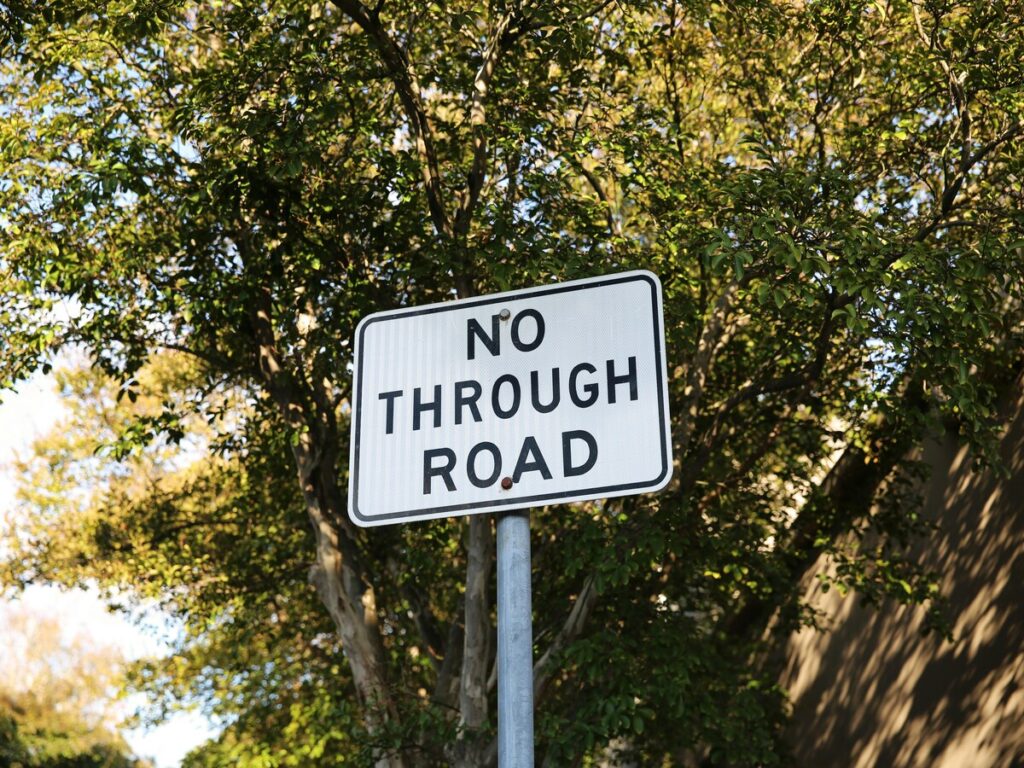
Rivestimenti sacrificali
I rivestimenti sacrificali mettono uno scudo sottile su un cartello stradale. Questi rivestimenti usano cere o polimeri che si attaccano leggermente al segno. Se qualcuno disegna graffiti, I lavoratori possono lavare via sia i graffiti che il rivestimento. Dopo la pulizia, I lavoratori devono indossare un nuovo livello.
Come applicare:
- Assicurarsi che il segno sia pulito e asciutto.
- Usa uno spruzzatore, rullo, o spazzola per indossare il rivestimento.
- Le superfici ruvide hanno bisogno di almeno due mani.
- Lascia asciugare ogni cappotto prima di aggiungerne un altro.
Professionisti:
- Costa meno denaro.
- Semplice da usare e rimuovere.
- Mantiene il segno lo stesso.
Contro:
- Ha bisogno di un nuovo cappotto dopo ogni pulizia.
- I costi di manutenzione si sommano nel tempo.
Migliori casi d'uso:
Murali, segni di legno, e luoghi con molti graffiti.
Mancia: I rivestimenti sacrificali sono buoni per i punti con molti graffiti e dove è necessaria una pulizia rapida.
Rivestimenti semi-sacrificiali
I rivestimenti semi-sacrificiali usano materiali acrilici che durano più a lungo di quelli sacrificali. Questi rivestimenti perdono alcuni strati quando sono puliti, Ma non tutto. I lavoratori possono utilizzare acqua calda o lavaggio ad alta pressione per pulire i graffiti. Dopo alcune pulizie, Potrebbe essere necessario un nuovo cappotto.
Come applicare:
- Pulisci prima la superficie.
- Metti gli strati con spruzzatore o rullo.
- Controlla per assicurarti che l'intero segno sia coperto.
Professionisti:
- Dura più a lungo dei rivestimenti sacrificali.
- La pulizia con acqua è più facile.
- Gentile sulla superficie del segno.
Contro:
- Ha bisogno di un nuovo cappotto dopo alcune pulizie.
- La manutenzione è necessaria a volte.
Migliori casi d'uso:
Muri di pietra, vecchi edifici, e luoghi in cui i segni hanno bisogno di cure delicate.
Rivestimenti permanenti
Rivestimenti permanenti, Chiamati anche rivestimenti non sacrificali, make a hard, strong shield on the sign. These coatings use things like polyurethane or fluorinated hydrocarbons. Some types use silicone to make paint hard to stick. Workers only need to put these coatings on once.
Come applicare:
- Clean and dry the sign.
- Use a sprayer or brush to put on the coating.
- Let it dry to make a hard layer.
Professionisti:
- Protects for a long time.
- Can change the finish from dull to shiny.
- Works on metal, plastica, e altro.
Contro:
- Might make the sign look shinier.
Migliori casi d'uso:
Transit signs, tunnel, ponti, and underpasses.
Nota: Some permanent coatings, like APV Engineered Coatings’ VYNGUARD, protect against stains from markers and coffee. They also block UV rays and stop fungus from growing.
Nano-Coatings
Nano-coatings use tiny particles, like silica, to make a strong shield. These coatings make the surface push away water and oil. Dipingi e pennarelli non si attaccano bene a queste superfici. I nano-coati sono molto sottili e quasi invisibili.
Come applicare:
- Clean and dry the sign.
- Spruzzare sul rivestimento come pretrattamento.
- Lascialo asciugare per fare uno scudo.
Professionisti:
- Funziona bene contro i graffiti per acqua e petrolio.
- Molto forte e dura a lungo.
- Mantiene il cartello nuovo nuovo.
Contro:
- Costa più di altri rivestimenti.
- A volte ha bisogno di strumenti speciali da mettere.
Migliori casi d'uso:
Grandi progetti, Luoghi che necessitano di una forte protezione, e aree con regole rigorose sull'aspetto.
Rivestimenti radiosi
I rivestimenti radiosi UV usano sostanze chimiche speciali che si fanno difficili con la luce UV. Questi rivestimenti fanno un duro, Livello chiaro che mantiene i segni al sicuro dai graffiti. Il rivestimento si asciuga velocemente, Quindi è buono per lavori veloci.
Come applicare:
- Clean and dry the sign.
- Usa uno spruzzatore o un rullo per indossare il rivestimento.
- Usa la luce UV per rendere duro il rivestimento.
Professionisti:
- Asciuga e si indurirà rapidamente.
- Forte contro graffi e danni.
- Protects for a long time.
Contro:
- Ha bisogno di luce UV per funzionare.
- Non va bene per ogni posto.
Migliori casi d'uso:
Luoghi con strumenti UV, aree occupate, e progetti che devono essere finiti velocemente.
Tavolo: Confronto dei tipi di rivestimento anti-graffiti
| Tipo di rivestimento | Composizione | Metodo dell'applicazione | Professionisti | Contro | Migliori casi d'uso |
|---|---|---|---|---|---|
| Sacrificale | Cere o polimeri | Spray/rullo/pennello | Basso costo, facile rimozione | Ha bisogno di riapplicazione | Murali, legna, aree ad alto vandalismo |
| Semi-sacrificiale | Acrilico alto build | Applicazione a strati | Durevole, pulizia delicata | Manutenzione moderata | Edifici storici, muri di pietra |
| Permanente | Poliuretano, fluorurati, silicone | Applicazione singola | Di lunga durata, finitura regolabile | Può alterare l'aspetto | Transito, tunnel, ponti |
| Nano-Coatings | Nanoparticelle di silice | Pretrattamento, spray | Altamente efficace, invisibile | Costo più elevato, Strumenti speciali | Protezione avanzata, Aspetto rigoroso |
| Radioso ai raggi UV | Prodotti chimici UV-reattivi | Spruzzo/rullo + Luce UV | Currezione rapida, forte protezione | Ha bisogno di luce UV | Progetti veloci, aree ad alto traffico |
Pur proteggere la superficie del segnale stradale è cruciale, È importante ricordarlo hardware del segnale stradale—Mi come poli e parentesi di segno: ha bisogno anche di protezione dagli elementi. I rivestimenti resistenti alla corrosione svolgono un ruolo vitale nel migliorare la longevità dell'hardware del segnale stradale, prevenire la ruggine e il degrado nel tempo. Per saperne di più su come questi rivestimenti aiutano a mantenere l'integrità strutturale dei segnali stradali, Dai un'occhiata al nostro blog su L'impatto dei rivestimenti resistenti alla corrosione sulla longevità dell'hardware del segnale stradale.
Valutazioni e prestazioni
Efficacia di rimozione dei graffiti
Efficacia della rimozione dei graffiti significa come i rivestimenti aiutano i lavoratori a pulire i graffiti. Alcuni rivestimenti consentono ai lavoratori di usare solo acqua per asciugare la vernice spray o il pennarello. Altri rivestimenti hanno bisogno di detergenti speciali per rimuovere i graffiti. I rivestimenti permanenti consentono ai lavoratori di pulire i segni molte volte senza ferirli. I rivestimenti sacrificali vengono fuori con i graffiti, Quindi i lavoratori devono indossare un nuovo livello ogni volta. I nano-coati rendono la superficie scivolosa, Quindi i graffiti scivolano facilmente. I rivestimenti radiosi UV fermano anche le macchie e rendono veloce la pulizia.
Mancia: Segni che sono facili da pulire il tempo di risparmio e minori costi di manutenzione.
Durata e longevità
Durabilità significa quanto tempo i rivestimenti durano i segnali stradali. I rivestimenti permanenti possono proteggere i segni per molti anni. I nano-coati sono anche molto forti e continuano a lavorare dopo molte pulizie. I rivestimenti sacrificali devono essere riportati spesso, Quindi non durano più a lungo. I rivestimenti radiosi UV fanno uno strato duro che resiste a graffi e maltempo. I rivestimenti semi-sacrificiali durano più a lungo di quelli sacrificali ma hanno ancora bisogno di nuovi strati dopo alcune pulizie.
Un tavolo può aiutarti a vedere quanto durano i rivestimenti:
| Tipo di rivestimento | Livello di durata | Longevità (Anni) |
|---|---|---|
| Sacrificale | Basso | 0.5 – 1 |
| Semi-sacrificiale | Medio | 1 – 2 |
| Permanente | Alto | 5+ |
| Nano-Coatings | Molto alto | 5+ |
| Radioso ai raggi UV | Alto | 3 – 5 |
Meteo e resistenza ai raggi UV
I segnali stradali affrontano il sole, piovere, nevicare, E il vento ogni giorno. I rivestimenti devono proteggere i segni da queste cose. I rivestimenti permanenti e i nano-coati sono bravi a bloccare l'acqua e fermare i raggi UV. UV-curable coatings also protect signs from sunlight and bad weather. Sacrificial coatings wear away faster when the weather is rough. Semi-sacrificial coatings protect better but still need checks after storms.
Nota: Good weather and UV resistance helps signs stay bright and easy to read.
Impatto sulla visibilità
Visibility is important for road safety. Coatings should not change the color or shine of traffic signs. Most nano-coatings and UV-curable coatings are clear and do not change how drivers see the sign. Permanent coatings can make signs look shiny or dull, but they should not block messages. Sacrificial and semi-sacrificial coatings usually keep the sign looking the same. Experts test coatings to make sure they do not make signs harder to see.
Environmental and Safety
Many cities want coatings that are safe for people and the planet. Water-based coatings and nano-coatings often use fewer harmful chemicals. UV-curable coatings dry fast and do not smell strong. Permanent coatings may use more chemicals, but some brands now make safer choices. Workers should always follow safety rules when putting on coatings. Some coatings meet green building rules or have low VOC levels.
Callout: Picking eco-friendly coatings helps keep workers and the environment safe.
Efficienza dei costi
Cost efficiency means how much money it takes to use coatings over time. Sacrificial coatings cost less at first but need to be put on again and again. Permanent coatings and nano-coatings cost more at the start but last longer and need less work. UV-curable coatings save money because they dry fast and workers finish sooner. I rivestimenti semi-sacrificiali sono nel mezzo per il prezzo e quanto lavoro hanno bisogno. Città e agenzie guardano al costo totale prima di scegliere un rivestimento.
Un semplice elenco per l'efficienza dei costi:
- Sacrificale: All'inizio economico, costa più più tardi
- Semi-sacrificiale: Prezzo medio, ha bisogno di una manutenzione
- Permanente: All'inizio costoso, Più economico nel tempo
- Nano-coati: Prezzo elevato, MOLTO MANUTENZIONE
- Radioso ai raggi UV: Prezzo medio -alto, Risparmia il lavoro con asciugatura rapida
Conformità standard del settore
I rivestimenti dei segni del traffico devono seguire alcune regole. Negli Stati Uniti, IL MUTCD Imposta gli standard per i segni. L'Europa usa en 12899. Molti rivestimenti seguono anche ISO 9001 per qualità. Queste regole controllano quanto funzionano i rivestimenti, da quanto durano, E se sono al sicuro. Le agenzie testano i rivestimenti in laboratorio e all'esterno. Solo i rivestimenti che superano questi test possono essere utilizzati su strade pubbliche.
Allo stesso modo, Quando si tratta di cornici dei cartelli che tengono in atto questi segni rivestiti, È altrettanto cruciale per assicurarsi che si rispettano gli standard necessari. Cornici dei segnali stradali portatili, ad esempio, Deve soddisfare linee guida specifiche per garantire la sicurezza e la durata sulla strada. Per capire come questi frame si allineano con i requisiti MUTCD, Dai un'occhiata al nostro blog su Cosa rende conformi ai segnali stradali portatili?
Riepilogo del confronto
Tipi di rivestimento a colpo d'occhio
I rivestimenti anti-graffiti aiutano a proteggere i segnali stradali. Ogni tipo funziona a modo suo. Un po 'più a lungo, mentre altri sono più facili da pulire. Rivestimenti permanenti, Come il poliuretano, Crea uno scudo duro. Smettono di graffiti e proteggono dal maltempo. I rivestimenti sacrificali usano micro cera per creare uno strato. I lavoratori lavano questo strato con i graffiti. I rivestimenti semi-sacrificiali sono forti ma facili da rimettere. I nano-coati usano nuove tecnologie per allontanare l'acqua e il petrolio. Questo mantiene i segni puliti. I rivestimenti radiosi UV si asciugano velocemente e funzionano bene in luoghi impegnativi.
Ecco alcune cose a cui pensare quando si raccolgono i rivestimenti:
- I rivestimenti permanenti rimangono sui segni più a lungo e hanno bisogno di meno nuovi cappotti.
- I rivestimenti sacrificali costano meno ma hanno bisogno di più cure.
- Nano-coati e rivestimenti radiosi UV funzionano benissimo con il tempo difficile.
- È importante che i segni siano facili da pulire e mantengono il loro colore.
Nota: Le immagini da uno stereomicroscopio e grafici a colori mostrano che i rivestimenti permanenti possono lasciarsi un po 'alle spalle dopo la pulizia. I rivestimenti sacrificali decollano sia i graffiti che il rivestimento. Entrambi i tipi mantengono i cambiamenti di colore piccoli, Quindi i segni sono ancora sicuri da usare.
Tabella delle valutazioni
La tabella seguente mostra come funzionano diversi rivestimenti anti-graffiti. Sembra cose come il modo in cui spingono via l'acqua, Se il colore cambia, Quanto sono facili da pulire, E da quanto durano. Questi fatti aiutano i lavoratori a scegliere il rivestimento migliore per il loro lavoro.
| Proprietà | Rivestimenti permanenti (Poliuretano) | Rivestimenti sacrificali (Micro cera) | Nano-Coatings | Rivestimenti radiosi |
|---|---|---|---|---|
| Repellenza dell'acqua (Angolo di contatto °) | 100-105 | 87-101 | 105+ | 100+ |
| Cambio di colore (ΔE*) | 5-11 | ≤5 | ≤3 | ≤4 |
| Efficienza di pulizia | Alto (spazzola, alcuni residui) | Molto alto (rimosso con graffiti) | Molto alto | Alto |
| Agenti atmosferici | Bene, qualche perdita dopo l'invecchiamento | Moderare, Perde la repellenza in arenaria | Eccellente | Molto bene |
| Frequenza di manutenzione | Basso | Alto | Molto basso | Basso |
| Prestazioni complessive | Alto | Moderare | Molto alto | Alto |
Mancia: I team di manutenzione dovrebbero esaminare sia le valutazioni che le immagini. Questo li aiuta a vedere come i rivestimenti reggono dopo un sacco di pulizia e maltempo.
Scegliere per la manutenzione dei segni del traffico
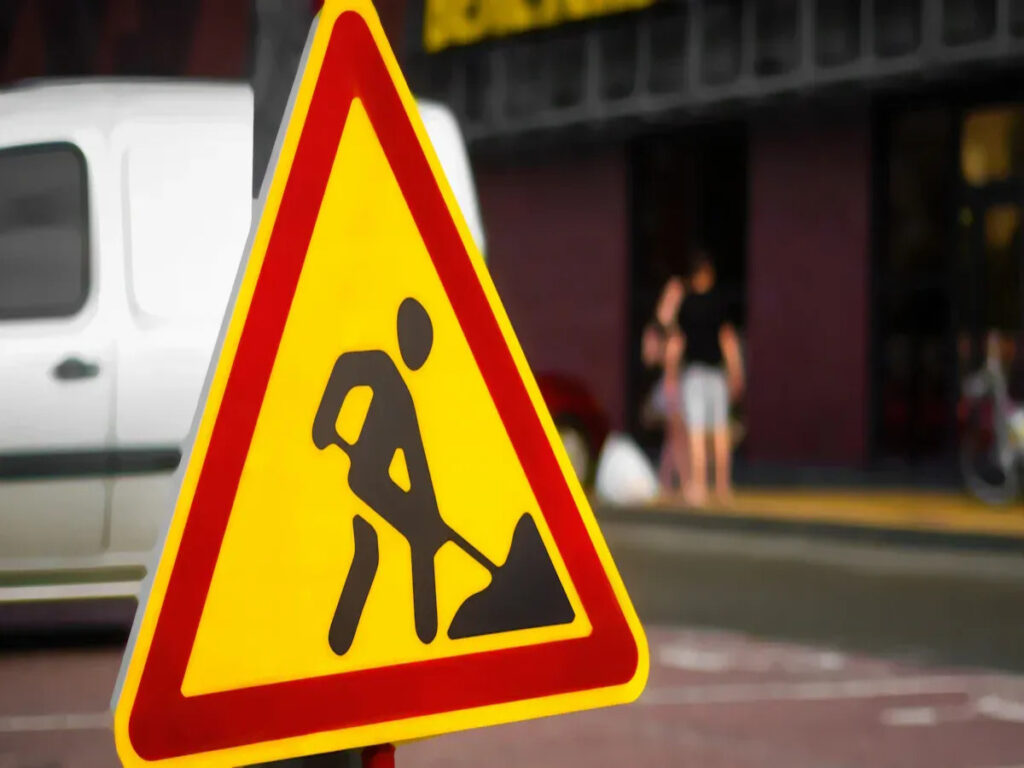
Valutare il materiale e la posizione del segno
I segnali stradali sono realizzati da cose come l'alluminio, acciaio, o plastica. Alcuni rivestimenti funzionano meglio con segnali di metallo liscio. Altri rivestimenti proteggono di più le superfici più ruvide. Le città hanno spesso più graffiti delle strade di campagna. Le strade rurali ottengono più pioggia, nevicare, e sole. Le squadre dovrebbero guardare dove si trova il segno prima di scegliere un rivestimento. I segni vicino alle strade trafficate hanno bisogno di rivestimenti forti. Questi rivestimenti devono combattere i graffiti e l'inquinamento. Nel paese, I rivestimenti devono resistere al maltempo. Le squadre dovrebbero abbinare il rivestimento al materiale del segno e alla sua posizione.
Mancia: Prova prima un piccolo punto per vedere come funziona il rivestimento con il segno.
Considerazioni sulla manutenzione e sui costi
Le squadre devono pensare a quanto spesso puliscono i segni. I rivestimenti sacrificali sono inizialmente più economici, ma devono essere riportati spesso. I rivestimenti permanenti durano più a lungo e hanno bisogno di meno lavoro. I nano-coati e i rivestimenti radiosi UV possono risparmiare nel tempo. Non hanno bisogno di molta manutenzione. Le squadre dovrebbero guardare al costo totale, Non solo il prezzo del rivestimento. Lavoro, Forniture per la pulizia, E il tempo tutto conta. Una tabella può aiutare i team a confrontare le loro scelte:
| Tipo di rivestimento | Costo iniziale | Esigenze di manutenzione | Risparmio a lungo termine |
|---|---|---|---|
| Sacrificale | Basso | Alto | Basso |
| Permanente | Alto | Basso | Alto |
| Nano-Coatings | Alto | Molto basso | Alto |
| Radioso ai raggi UV | Medio | Basso | Medio |
Corrispondere al rivestimento alle esigenze
Ogni progetto è diverso e ha bisogno del proprio piano. Nelle città, I coati permanenti o nano funzionano meglio. Gestiscono molti graffiti e strade trafficate. I luoghi rurali hanno bisogno di rivestimenti che combattono il tempo e hanno bisogno di poca cura. I progetti eco-compatibili dovrebbero utilizzare rivestimenti a base d'acqua o a basso VOC. Le squadre dovrebbero scegliere i rivestimenti in base al posto del cartello, di cosa è fatto, E quanto spesso viene pulito. Questo aiuta a mantenere i segni chiari e sicuri per tutti.
Nota: Scegliere il rivestimento giusto consente di risparmiare denaro e mantenere le strade al sicuro.
Casi studio
Applicazioni urbane
Le città hanno problemi con i graffiti sui segni ogni giorno. A New York City, Le squadre usano rivestimenti permanenti in strade trafficate. Questi rivestimenti aiutano i lavoratori a pulire i graffiti velocemente. I segni rimangono facili da leggere dopo molte pulizie. A Chicago, Gli equipaggi hanno messo i nano-coati sui cartelli vicino alle scuole e ai parchi. Questi rivestimenti rendono la vernice spray difficile da attaccare. I lavoratori usano acqua e sapone per lavare i graffiti. La città consente di risparmiare denaro perché i segni durano più a lungo e non devono essere sostituiti tanto.
Mancia: Le città hanno bisogno di rivestimenti che fermano sia i graffiti che l'inquinamento.
Autostrada e uso rurale
Le autostrade e le strade di campagna hanno bisogno di rivestimenti difficili. In Texas, I team usano rivestimenti radiosi con i segnali dell'autostrada. Questi rivestimenti si asciugano velocemente e proteggono i segni dal sole e dalla pioggia. In Oregon, Gli equipaggi usano rivestimenti semi-sacrificiali sui cartelli vicino alle foreste. Questi rivestimenti semplificano la pulizia dei graffiti e proteggono dal tempo. Le squadre dicono che questi rivestimenti significano che sostituiscono meno segni. Nel paese, Ci sono meno lavoratori, I rivestimenti così duraturi risparmiano tempo.
- Autostrade: Rivestimenti radiosi per la protezione rapida
- Strade rurali: Rivestimenti semi-sacrificiali per una facile pulizia
Soluzioni ecologiche
Alcune città vogliono rivestimenti che fanno bene all'ambiente. A San Francisco, I team usano rivestimenti a base d'acqua con vocs bassi su nuovi segni. Questi rivestimenti mantengono l'aria cattive sostanze chimiche. I lavoratori dicono che questi rivestimenti funzionano bene contro i graffiti e il tempo. A Seattle, Gli equipaggi provano i nano-coati fatti da cose naturali. Questi rivestimenti usano la luce solare per abbattere i graffiti. I rivestimenti ecologici aiutano le città a raggiungere gli obiettivi verdi e proteggere i lavoratori.
| Città | Tipo di rivestimento | Beneficio |
|---|---|---|
| San Francisco | A base d'acqua | Basso, Sicuro per l'aria |
| Seattle | Coating nano | Usa la luce solare, Eco-friendly |
Nota: I rivestimenti ecologici aiutano a proteggere le persone e proteggere il pianeta.
Sfide e limitazioni
Complessità dell'applicazione
Alcuni rivestimenti anti-graffiti sono difficili da indossare. Alcuni rivestimenti, Come la poliurea, Hai bisogno di strumenti di spruzzo speciali. I lavoratori devono imparare a utilizzare questi strumenti in sicurezza. Questo può essere difficile per piccole squadre o luoghi con poca allenamento. Il rivestimento veloce è buono per i grandi lavori. Ma la necessità di attrezzature speciali può rallentare piccoli progetti. Uno studio ha scoperto che i rivestimenti della nano-silica hanno reso i segni più forti contro i graffiti. Ma le prime versioni erano deboli e avevano bisogno di più lavoro per migliorare.
Mancia: La formazione dei lavoratori prima di un progetto li aiuta a fare un lavoro migliore e far funzionare i rivestimenti.
Impatto ambientale
Molte città vogliono rivestimenti sicuri per la natura. I rivestimenti in poliurea non emettono COV gratuiti. Questo li rende buoni per i progetti verdi. Alcuni rivestimenti usano formule a base d'acqua per proteggere l'aria e il suolo. La raccolta di rivestimenti con COV bassi mantiene i lavoratori e la terra al sicuro. Ma non tutti i rivestimenti sono sicuri, Quindi i team devono controllare le etichette prima di acquistare.
| Fattore di successo | Descrizione |
|---|---|
| Impatto ambientale | I rivestimenti in poliurea non hanno COV gratuiti, Quindi sono migliori per l'ambiente. |
Manutenzione e riapplicazione
Quante volte i rivestimenti necessitano di cure dipende dal tipo utilizzato. I rivestimenti sacrificali devono essere ricoperti dopo ogni pulizia. I rivestimenti permanenti durano più a lungo e hanno bisogno di meno lavoro. I rivestimenti in poliurea semplificano la pulizia e risparmia tempo. I team dovrebbero controllare spesso i segnali per farli funzionare bene. Tempo atmosferico, inquinamento, E il traffico può cambiare la frequenza con cui i rivestimenti hanno bisogno di cure.
Nota: La pianificazione in anticipo aiuta i rivestimenti a durare più a lungo e mantiene i segni facili da leggere.
Costo vs. Prestazione
I team devono pensare sia al costo che a quanto bene funzionano i rivestimenti. All'inizio alcuni rivestimenti sono economici ma devono essere ricoperti spesso. Altri, come i rivestimenti a base di poliurea o nano, costa di più ma dura più a lungo e funziona meglio. I team possono utilizzare uno studio costi-benefici per scegliere il migliore per i loro soldi e le loro esigenze. Quanto durano i rivestimenti, Quanto sono facili da pulire, E se sono al sicuro per l'ambiente, tutto conta.
Callout: Coatings that work well may save money later by lowering how much care and replacement is needed.
Picking the right anti-graffiti coatings keeps traffic signs safe and easy to see. Each coating type has its own good points for cleaning, tempo atmosferico, e costo. Città, autostrade, and schools use coatings that last through many cleanings. These coatings also protect signs from pollution, Raggi UV, e acqua. Experts say coatings can make cleaning 40% faster and save money. Not every coating works well on every sign. Teams should try out coatings, look at ratings, and follow the rules for signs.
For more details, check out field studies and expert tips about coatings for public places.
- Field studies show coatings help save both time and money.
- Experts say to test coatings at each spot before using them.
- L'uso dei rivestimenti aiuta il pianeta riducendo sostanze chimiche e acqua.
Domande frequenti
Qual è lo scopo principale dei rivestimenti anti-graffiti sui segnali stradali?
I rivestimenti anti-graffiti aiutano a proteggere i segnali stradali dai graffiti. Impediscono alla vernice e ai pennarelli di attaccare al segno. Questo rende più facile per i lavoratori pulire i segni. Questi rivestimenti aiutano i conducenti a vedere messaggi importanti sulla strada.
Quante volte le squadre di manutenzione dovrebbero riapplicare i rivestimenti anti-graffiti?
Quante volte i team aggiungono un nuovo rivestimento dipende dal tipo. I rivestimenti sacrificali hanno bisogno di un nuovo strato dopo ogni pulizia. I coati permanenti e nano possono durare per anni. Le squadre dovrebbero controllare spesso i segnali per sapere quando aggiungerne di più.
I rivestimenti anti-graffiti influenzano il colore o la riflettività dei segnali stradali?
La maggior parte dei nuovi rivestimenti non cambia il modo in cui i segni sembrano o brillano. Nano-coati e rivestimenti radiosi per UV rimangono chiari e difficili da vedere. Gli esperti testano i rivestimenti per assicurarsi che i segni siano ancora facili da leggere.
Sono rivestimenti anti-graffiti sicuri per l'ambiente?
Molti rivestimenti usano formule a base d'acqua o basse. Queste scelte aiutano a mantenere al sicuro il pianeta e i lavoratori. Le città scelgono spesso rivestimenti ecologici per luoghi pubblici.
I lavoratori possono rimuovere tutti i tipi di graffiti con questi rivestimenti?
La maggior parte dei rivestimenti consente ai lavoratori di pulire la vernice spray, marcatori, e adesivi. Alcuni graffiti difficili potrebbero aver bisogno di detergenti speciali. I lavoratori dovrebbero sempre seguire le indicazioni del produttore per i migliori risultati.
Mancia: Prova sempre prima un piccolo punto per vedere come funziona il rivestimento con il segno.




